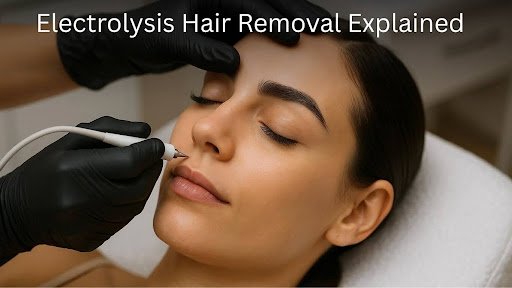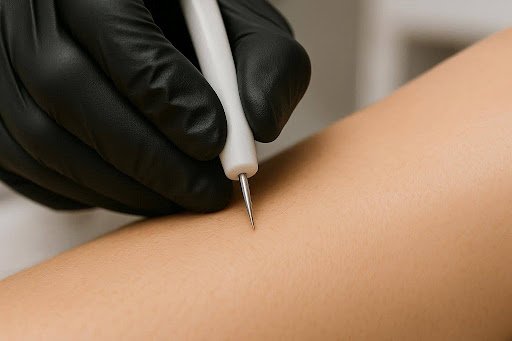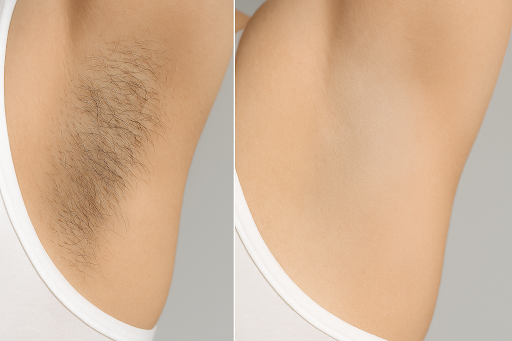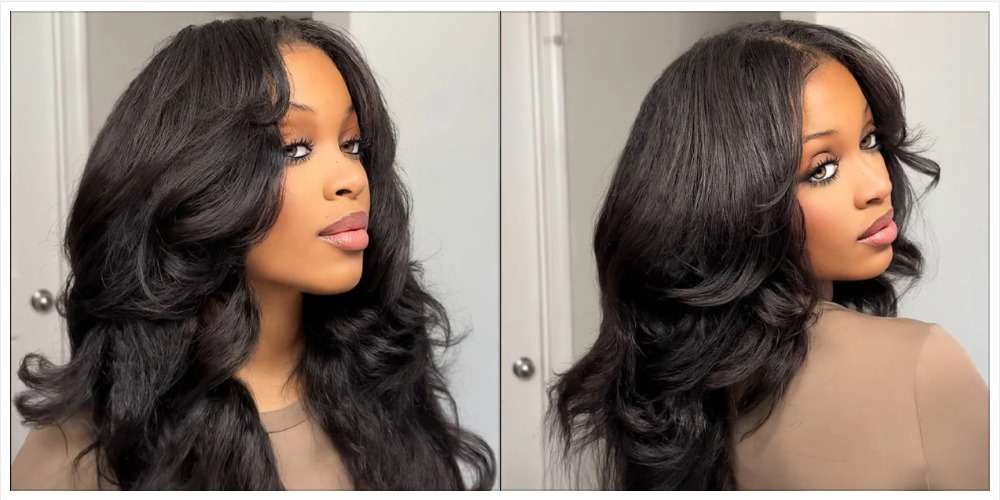Beauty
Surprising Witch Hazel Uses for Skin You Might Want to Try

People have been using witch hazel for generations – and for good reason. Coming from the Hamamelis virginiana plant, it’s one of the few natural ingredients that can both calm irritation and help tone the skin without drying it out. The thing is, the many witch hazel uses go way beyond old-school toner.
Whether you’re looking for something to deal with itching, inflammation, or just those post-shave bumps, here are some practical, gentle ways to include the benefits of witch hazel in your routine.
There Are Some Surprising Witch Hazel Uses
So, just how many different witch hazel uses are there? Well, there are some you’re likely to know already, and some that might come as a surprise. Let’s take a look, shall we?
Use Case #1 – Itch Relief
Thanks to its anti-inflammatory properties, it’s often used in anti-itch lotions. If you have skin that flares up because of dryness or maybe shaving, a lotion like this can quickly help to cool things down. It can be especially helpful when paired with other soothing ingredients like pramoxine or aloe.
Use Case #2 – Toning Oily Or Acne-Prone Skin
Witch hazel is a natural astringent, meaning it helps tighten the skin and make the pores less visible. It’s also able to gently remove excess sebum without impacting the skin barrier. Because of this ability, you’ll often find it used as an ingredient in acne-friendly toners.
Use Case #3 – Soothing Razor Burn & Post-Shave Bumps
Shaving can leave your skin red, bumpy, and irritated – after all, you are dragging a blade across its surface. This can cause sensitivity on the face, under the arms or even along your bikini line. If you experience problems like this, witch hazel can help reduce redness and discomfort.
Use Case #4 – Refreshing Sun-Damaged Skin
While it’s important to say that witch hazel is never going to be a replacement for sunscreen, witch hazel can help reduce the redness and discomfort that comes from being out in the sun a bit too long. While your skin is recovering, its cooling effect can offer temporary relief.
Use Case #5 – Stopping Bug Bites From Swelling
Did you know that witch hazel can be surprisingly effective at taking the heat out of bug bites? It’s able to do so by reducing inflammation and soothing the skin’s reaction. If you notice that telltale painful area that tells you a mosquito has dined on your skin, it’s a great option to turn to for relief.
Use Case #6 – Balancing Your Scalp
If your scalp gets itchy, oily, or irritated between washes, witch hazel can help restore balance. It removes excess oil and buildup without the harsh ingredients found in many dandruff shampoos.
When your scalp feels irritated or flaky, and you want something gentler than medicated treatments, it’s nice to know there’s something to help.
Use Case #7 – Supporting Your Skin Post-Workout
Sweat, friction, and heat can irritate your skin, with the area around the chest, back, and thighs often being affected. The good news is that witch hazel helps refresh the skin, reduce inflammation, and keep you feeling clean after a workout, so no worries there.
A Whole Host of Witch Hazel Uses to Enjoy
Witch hazel is one of those rare ingredients that lives up to the hype. When it comes to calming, balancing, and refreshing your skin, there aren’t many things more effective. Whether you’re looking for something to do with an itch or tone your skin, it’s a versatile plant-based solution that fits into almost any routine. Maybe it’s time to start enjoying those benefits yourself.
Beauty
Primerem: Primer for Deep Hydration & Glowing Skin

Are you tired of dull, dehydrated skin that lacks that coveted glow? Meet Primerem—the ultimate skincare solution designed to transform your complexion. If you’ve been searching for a product that delivers deep hydration and leaves your skin radiating with freshness, look no further. This innovative primer is more than just a base for makeup; it’s the secret weapon in your skincare arsenal that hydrates from within.
Imagine stepping out each day with effortlessly luminous skin, feeling confident and ready to take on the world. Whether you’re prepping for an event or simply want to enhance your daily routine, Primerem promises to be the key ingredient in achieving radiant results. Let’s dive deeper into what makes this product stand out and how it can elevate your skincare game!
What is Primerem?
Primerem is a cutting-edge skincare primer specifically formulated to deliver intense hydration and promote a healthy, glowing complexion. Unlike traditional primers that primarily focus on makeup application, Primerem goes beyond by nourishing the skin while creating a smooth base.
This innovative product blends seamlessly into your skincare routine. It acts as both a hydrating serum and an effective primer, making it versatile for various skin types.
Packed with powerful ingredients, Primerem targets dryness and uneven texture. Its lightweight formula absorbs quickly, leaving no greasy residue behind—just pure moisture that revitalizes tired skin.
Whether you’re heading out for a busy day or preparing for an evening event, incorporating Primerem can enhance your natural beauty effortlessly. This game-changing product aims not only to improve makeup longevity but also to elevate your overall skincare experience.
Benefits of Primerem for the Skin
Primerem offers a multitude of benefits for your skin, making it an essential addition to your skincare routine. Its deep hydration properties help quench thirsty skin, leaving it feeling plump and rejuvenated.
This primer also creates a smooth canvas for makeup application. By minimizing the appearance of pores and fine lines, Primerem allows foundation to glide on effortlessly.
Additionally, its antioxidant-rich formula protects against environmental stressors. This helps combat signs of aging while promoting a youthful glow.
Using Primerem can enhance your natural radiance. It brings out the best in your complexion, ensuring you look fresh throughout the day.
Moreover, it suits various skin types. Whether you have oily or dry skin, Primerem adapts to meet individual needs without causing irritation or breakouts.
Key Ingredients and their Functions
Primerem is crafted with an impressive blend of key ingredients that work harmoniously to deliver deep hydration and a radiant glow.
Hyaluronic acid stands out for its remarkable ability to retain moisture. This superstar ingredient can hold up to 1,000 times its weight in water, providing your skin with lasting hydration.
Next, we have Vitamin C, known for its brightening properties. It helps to even out skin tone while combating free radicals that cause premature aging.
Another vital component is glycerin. This natural humectant draws moisture from the environment into the skin, ensuring it remains plump and supple throughout the day.
Aloe vera offers soothing benefits. Its anti-inflammatory properties calm irritated skin while delivering essential nutrients for healthy cell regeneration.
Together, these ingredients create a powerhouse formula designed to transform your skincare routine and enhance your natural beauty.
How to Use Primerem for Optimal Results
To achieve the best results with Primerem, start by cleansing your face thoroughly. This step ensures that any dirt or oils are removed, allowing for better absorption of the product.
Next, apply a small amount of Primerem to your fingertips. A little goes a long way; you don’t need to slather it on. Gently massage it into your skin using upward strokes.
Focus on areas that tend to be drier or where makeup often fades first. Allow the primer to settle for a minute before applying foundation or other skincare products.
For an added hydration boost, try layering Primerem under your moisturizer at night. This enhances the skin’s moisture retention and gives you that dewy glow by morning.
Remember, consistency is key! Regular use will yield noticeable improvements in texture and overall radiance.
Customer Reviews and Testimonials
Customers rave about their experiences with Primerem. Many users have noted how instantly their skin feels hydrated and refreshed upon application.
One happy customer mentioned, “My makeup glides on smoothly now, and I can actually see a glow!” This transformation has made them feel more confident in their appearance.
Others appreciate the lightweight texture that doesn’t clog pores. They highlight how it provides all-day moisture without feeling greasy.
Testimonials also reflect on the long-term benefits of using Primerem regularly. Several users report a noticeable improvement in skin texture after just weeks of use.
The positive feedback continues to pour in, showcasing not just satisfaction but genuine enthusiasm for this product’s ability to enhance natural beauty.
Where to Purchase Primerem
Finding the perfect place to purchase Primerem is easy. This sought-after product is available at various online retailers, ensuring convenience for all users.
You can visit the official Primerem website for direct purchases. They often provide exclusive offers and discounts that you won’t find elsewhere. Plus, shopping from their site guarantees authenticity.
Major e-commerce platforms like Amazon also stock Primerem. This option allows you to read customer reviews and compare prices quickly.
Local beauty supply stores may carry it as well, giving you a chance to explore other skincare products while you’re there.
Before making your choice, check for shipping options and return policies. You want a hassle-free experience when investing in your skin’s health.
Conclusion: Achieving Radiant Skin with Primerem
Achieving radiant skin is a journey, and Primerem can be an essential companion on that path. With its unique formulation designed to deeply hydrate and enhance your skin’s natural glow, it caters to various skin types and concerns.
The benefits of using Primerem are plentiful. It not only improves hydration levels but also helps create a smooth canvas for makeup application. The blend of key ingredients works synergistically to nourish the skin while promoting elasticity and suppleness.
Using Primerem is straightforward. Incorporating it into your daily routine can yield noticeable results over time, enhancing both the appearance and texture of your skin.
Customer feedback consistently highlights the effectiveness of this primer in transforming their skincare routines. Many users rave about how their complexions appear more luminous after just a few applications.
For those interested in experiencing these benefits firsthand, purchasing Primerem is easy through various online platforms or select retail stores.
Radiant, glowing skin is within reach when you make Primerem part of your beauty regimen. Your complexion deserves this level of care—embrace it today!
Beauty
Electrolysis Hair Removal Explained: 10 Key Insights

If you’ve ever wondered whether there’s a truly permanent way to remove unwanted hair, electrolysis is one of the rare options that delivers. It’s a method that treats the hair at its root and offers long-term results that many other techniques cannot match.
Electrolysis hair removal is a permanent method that uses a fine probe and a small electric current to destroy hair growth cells within each follicle.
It works on all hair colors and skin types, unlike laser treatments that rely on pigment. Once a follicle is treated, the hair cannot regrow. It’s a safe, precise, and FDA-approved solution for lasting hair removal.
In this article, I’ll walk you through how electrolysis actually works, where it can be used, what to expect before and after a session, how many treatments you might need, and how it compares with other hair removal methods.
Electrolysis Hair Removal Explained: 10 Key Insights

Electrolysis hair removal is based on the simple principle of destroying the hair growth cells within each follicle so that they can no longer produce hair. It’s a meticulous, targeted treatment performed one hair at a time, offering precision and long-term results.
Here’s how the process works:
- A trained electrologist uses a fine, sterile probe that’s about the width of a hair strand. This probe is gently inserted into the natural opening of the hair follicle, not the skin, so it’s virtually painless when done correctly.
- A small electrical current is then delivered through the probe to the base of the follicle, where the growth cells are located.
- This current destroys or weakens the follicle’s ability to grow new hair. The treated hair is then carefully removed with sterilised tweezers.
There are three main electrolysis methods used in clinics:
- Galvanic (Direct Current): Uses a low-level electric current that causes a chemical reaction inside the follicle. It produces sodium hydroxide, which gradually destroys the hair growth cells. This method is slower but extremely thorough, ideal for coarse or stubborn hair.
- Thermolysis (High-Frequency Current): Uses short bursts of radio frequency to generate heat, which cauterises the follicle tissue in just a fraction of a second. It’s faster and often used for smaller areas like the upper lip or chin.
- Blend Method: Combines both galvanic and thermolysis techniques, delivering the chemical and heat effects simultaneously. This method is highly effective for a wide range of hair types and skin tones.
The choice of technique depends on your skin type, pain tolerance, and hair texture. A skilled practitioner will select the most suitable method for each client and even switch techniques across areas for optimal results.
Areas Electrolysis Can Treat
Electrolysis is incredibly versatile. Because it doesn’t rely on pigment (unlike laser), it can safely treat any hair colour from white and blonde to dark brown or black and all skin tones, including very fair or deeply pigmented skin.
Common treatment areas include:
- Face: Upper lip, chin, jawline, sideburns, cheeks, eyebrows
- Body: Underarms, arms, legs, chest, back, abdomen
- Intimate areas: Bikini line and Brazilian zones
- Other delicate areas: Fingers, toes, and around the nipples
This flexibility makes electrolysis a great option for people who may not have been good candidates for laser hair removal, such as those with light or grey hair, hormonal hair growth (like PCOS-related), or mixed hair types.
Benefits of Electrolysis Hair Removal
Many people turn to electrolysis after trying other methods like waxing, threading, or laser, and finding that regrowth or incomplete results persist. Here’s why electrolysis stands out:
- Permanent results: Electrolysis destroys the growth cells in the follicle, meaning that once treated, the hair doesn’t return.
- Clinically proven and FDA-approved: Electrolysis is the only FDA-approved method for permanent hair removal, a distinction that even laser treatments do not have.
- Works on all hair and skin types: Because it doesn’t depend on pigment, it’s effective on light, dark, coarse, or fine hairs, including blond, white, and red hair.
- Safe and precise: Modern electrolysis equipment and sterile probes make the treatment safe for almost all skin types, including sensitive areas.
- Excellent for smaller or resistant areas: It’s often used to “finish” areas where laser treatment has left behind lighter or finer hairs.
When performed by an experienced professional, electrolysis offers clean, lasting, and predictable results.
What to Expect During a Session
Here’s roughly what a client might go through:
Preparation:
- The area should be clean and free of makeup, lotions, or creams.
- Avoid waxing, plucking, or threading weeks ahead of treatment, so the follicle remains present.
During treatment:
- The technician inserts the fine probe into one follicle at a time.
- You might feel mild sensations, a heated or stinging feeling as the current is applied.
- The intensity is adjusted to your comfort and your skin’s tolerance.
Session length & frequency:
- Small areas (e.g. upper lip) may take 15-30 minutes.
- Larger zones (legs, back) could take much longer, or even be split across sessions.
- Treatments are spaced out over time so the skin recovers (often weekly or biweekly at first).
Side Effects and Safety
Because electrolysis works at the microscopic level, side effects are usually mild and temporary. Possible reactions include:
- Redness or slight swelling
- Light scabbing or crusting
- Sensitivity or tenderness
To minimize risks:
- Apply gentle aftercare (described below)
- Avoid picking scabs
- Use sun protection
- Follow the technician’s instructions
Electrolysis is generally safe for all skin types when performed by experienced professionals. For particularly sensitive skin or skin conditions, a consultation is always prudent.
How Many Sessions Are Needed?
There’s no one-size-fits-all answer. The number of sessions depends on:
- The size of the treatment area
- Hair density (how many hairs per follicle)
- The hair growth cycle and how many hairs are active
- The type of hair (thicker hair may need more work)
On average, many clients begin to see noticeable hair reduction after 10-20 sessions (especially for facial zones). For larger areas or dense hair, it might take 20-30 or more.
Each session chips away at remaining active follicles until very few remain.
Electrolysis vs. Other Hair Removal Methods

Here are the main distinctions:
Electrolysis vs Laser:
- Laser uses light energy to target pigment; it’s great for dark hair on light skin but less effective on light or fine hair.
- Electrolysis works on all hair colors and textures.
- Only electrolysis is recognised (by the FDA in the U.S.) as a permanent hair removal method.
Why choose electrolysis over others:
- If your hair is light, grey, or fine
- If the laser hasn’t worked well for you
- If you want a truly permanent solution and are willing to invest time
Waxing, threading, and shaving are all temporary. They don’t destroy the root and hair will regrow repeatedly.
Aftercare and Recovery
Proper aftercare helps your skin heal and reduces the risk of complications.
Immediately after treatment:
- Apply a cold compress or soothing gel
- Avoid sun exposure (use SPF)
- Don’t pick or scratch any scabs
- Use very gentle skincare (mild cleansers, avoid active ingredients)
Long-term care:
- Continue to protect your skin from UV
- Avoid harsh treatments or exfoliants in the treated area
- Maintain hydration and gentle skin products
- Return for follow-up sessions as advised
Conclusion
So, does electrolysis work? Yes. When performed by a qualified professional, it’s one of the few proven methods for permanent hair removal. Electrolysis effectively destroys the hair follicle at its root, preventing regrowth for good. It’s safe, versatile, and ideal for all skin tones and hair types, including light or fine hair that laser often misses.
If you’re considering electrolysis hair removal in London, choose a reputable clinic with experienced practitioners who can assess your needs and create a tailored treatment plan. With patience and consistent sessions, you’ll achieve smooth, long-lasting results you can feel confident about.
FAQs
Is electrolysis painful?
You may feel mild heat, tingling, or a slight stinging sensation when the current is applied. Most people say it’s tolerable. The technician can adjust the intensity to your comfort.
Is it safe for sensitive skin?
Yes, when performed correctly. For very sensitive or reactive skin, start with small test areas and notify your technician of any skin conditions. Proper aftercare is key.
How long does each session take?
It depends on the area size. Small areas (upper lip, chin) may take 15–30 minutes. Larger zones (legs, underarms) can take an hour or more. Your technician will estimate based on your hair and skin.
Can electrolysis be done on all body areas?
Yes, it’s suitable for nearly any part of your body, including face, bikini area, underarms, legs, arms, and back.
Beauty
Ready in Minutes: CurlyMe Wear and Go Wigs & 360 Glueless Wigs

In a world where time is precious and beauty trends move fast, convenience and style are no longer optional—they’re essential. That’s where CurlyMe’s Wear and Go Wigs and 360 Glueless Wigs step in, offering the perfect solution for anyone who wants to look effortlessly flawless without spending hours in front of the mirror. Whether you’re a busy professional, a student on the go, or simply someone who values ease and versatility, these wigs are designed with you in mind.
CurlyMe wear and go wigs: Effortless Beauty in Seconds
As the name suggests, Wear and Go Wigs are designed to be worn instantly—no glue, no lace cutting, no long styling sessions. CurlyMe’s collection of wear and go wigs is perfect for beginners and seasoned wig lovers alike. These units come pre-plucked, pre-styled, and ready to wear straight out of the box.
What sets them apart is their natural look and snug fit. Featuring pre-cut lace and adjustable straps, CurlyMe wear and go wigs blend seamlessly with your hairline and stay secure all day. Whether you’re running errands, heading to work, or stepping out for a casual meet-up, you can throw on your wig and be out the door in minutes.
They’re also incredibly lightweight and breathable, making them comfortable for all-day wear. And because they’re made with 100% human hair, you can still curl, straighten, or restyle them as you wish.
CurlyMe 360 glueless wig: Full Coverage Meets Flexibility
If you’re looking for maximum styling versatility and full head coverage, CurlyMe’s 360 Glueless Wigs are a must-have. These wigs feature a full lace perimeter that allows you to part your hair in any direction—front, back, or sides—while still enjoying the benefits of a glueless, secure fit.
What makes 360 glueless wigs unique is the ability to achieve high ponytails, buns, or updos with ease. The lace runs around the entire hairline and nape, giving you the freedom to style your hair however you like without revealing any wig tracks. And since they’re glueless, there’s no need for adhesives or salon visits to install them.
CurlyMe’s 360 glueless wigs also feature adjustable bands and built-in combs, ensuring a snug and customizable fit that stays put all day long. They’re great for those who want both functionality and a natural-looking hairline without the hassle.
Why Choose CurlyMe?
CurlyMe has built a reputation for quality, affordability, and user-friendly design. All of their wigs are made with 100% virgin human hair, offering durability, softness, and a natural finish. Their wear and go wigs and 360 glueless wigs are crafted to save you time, protect your natural hair, and keep you looking fabulous no matter what your day throws at you.
Plus, CurlyMe offers a variety of textures—straight, body wave, curly, deep wave—and lengths to suit every personality and preference. Whether you prefer a sleek bob or voluminous curls, there’s something for everyone.
The Perfect Combo: Ready-to-Wear Meets Total Versatility
Combining Wear and Go Wigs with 360 Glueless Wigs gives you the best of both worlds: speed and style versatility. On the days when you’re in a rush, a wear and go wig is your best friend. For special occasions or days when you want to switch up your hairstyle completely, the 360 glueless wig has you covered.
Together, they create a complete hair wardrobe that adapts to your life—beautifully and effortlessly.
Final Thoughts
Gone are the days of time-consuming wig installs and messy glues. With CurlyMe’s Wear and Go Wigs and 360 Glueless Wigs, achieving a flawless, salon-quality look has never been easier. These wigs are made for real life—fast, flexible, and fabulous.
So if you’re ready to simplify your routine without compromising on beauty, explore CurlyMe’s collection and discover wigs that are truly ready in minutes.






